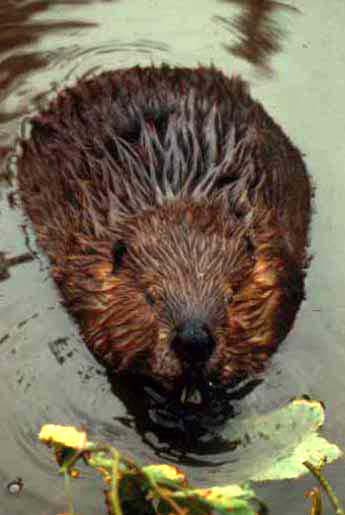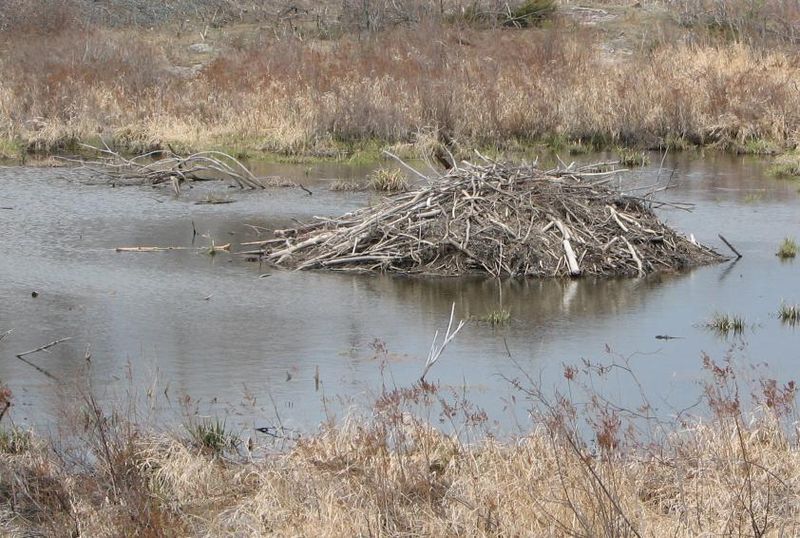
Interactions
 Beavers
interact very differently with beavers from their own colony and
beavers that are from other colonies. Their noses are very
significant when it comes to interactions with other species.
Beavers leave their scent on mounds that surround territory that
they believe belongs to them. If a beaver smells a mound and
doesn’t recognize the smell as belonging to one from his or her
own colony, the mound is usually demolished. If there are
numerous beaver colonies in an area, the mounds are located
everywhere. The mounds caution beavers from other areas that the
area they are in is currently taken. The scents on the mounds
are produced by the anal gland. Beavers that are related can
tell which scents come from relatives even if they have never
seen each other. Another frequently used signal is the tail
slap. This is done when they hear, smell, or see anything
suspicious. When this happens, they raise their tail into the
air and hit it onto the water with great strength. This can be
heard by humans from distances as far as 100 meters. Other
beavers
Beavers
interact very differently with beavers from their own colony and
beavers that are from other colonies. Their noses are very
significant when it comes to interactions with other species.
Beavers leave their scent on mounds that surround territory that
they believe belongs to them. If a beaver smells a mound and
doesn’t recognize the smell as belonging to one from his or her
own colony, the mound is usually demolished. If there are
numerous beaver colonies in an area, the mounds are located
everywhere. The mounds caution beavers from other areas that the
area they are in is currently taken. The scents on the mounds
are produced by the anal gland. Beavers that are related can
tell which scents come from relatives even if they have never
seen each other. Another frequently used signal is the tail
slap. This is done when they hear, smell, or see anything
suspicious. When this happens, they raise their tail into the
air and hit it onto the water with great strength. This can be
heard by humans from distances as far as 100 meters. Other
beavers respond by seeking safety in the den or water and
sometimes doing a tail slap back so that the beaver knows that
others have taken precautions. The beavers then come back out of
the water with caution. When young beavers tail slap, it is less
powerful and is often disregarded by older beavers. Finally,
hissing is very important in communicating between beavers. It
is a defense mechanism that is used when they see a predator or
are alarmed. Beavers hiss at muskrats whenever they see them.
Younger beavers often make whining noises that sound like a baby
crying. They do this to in order to let the parents know that
they are hungry.
respond by seeking safety in the den or water and
sometimes doing a tail slap back so that the beaver knows that
others have taken precautions. The beavers then come back out of
the water with caution. When young beavers tail slap, it is less
powerful and is often disregarded by older beavers. Finally,
hissing is very important in communicating between beavers. It
is a defense mechanism that is used when they see a predator or
are alarmed. Beavers hiss at muskrats whenever they see them.
Younger beavers often make whining noises that sound like a baby
crying. They do this to in order to let the parents know that
they are hungry.